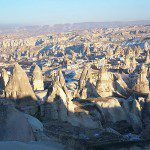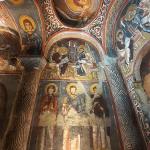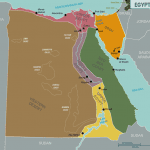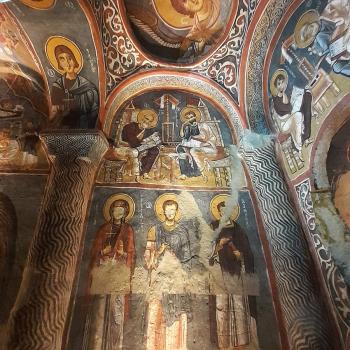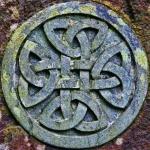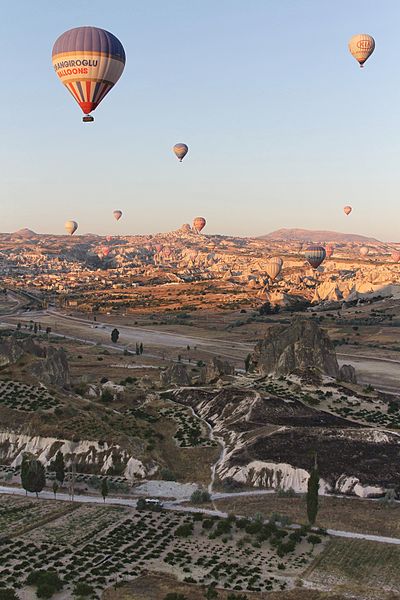
Cappadocia, in Turkey, is one of the most interesting places I’ve ever visited, and has one of the most interesting landscapes. And the dawn balloon rides are fabulous.
Two new articles appeared yesterday on the website of the Interpreter Foundation. I’m behind in calling attention to them, partly because I’m nine hours ahead of the time zone in which Interpreter is headquartered and partly because, well, I’m really busy. Anyway, here they be:
“Joseph Smith’s Education and Intellect as Described in Documentary Sources,” written by Brian C. Hales
Abstract: Although Joseph Smith has been credited with “approximately seven full school years” of district schooling, further research supports that his education consisted of basic instruction in “reading, writing and the ground rules of arithmetic” comprising “less than two years of formal schooling.” The actual number of terms he experienced in common schools in upstate New York is probably less critical since the curricula in district schools did not then teach creative writing, composition, or extemporaneous speaking. If Joseph Smith learned how to compose and dictate a book, extracurricular activities would likely have been the training source. Six of those can be identified: (1) private Bible studies, (2) Hyrum Smith’s possible tutoring in 1813, (3) participation in local religious activities, (4) involvement with the local juvenile debate club, (5) occasional family storytelling gatherings, and (6) brief participation as an exhorter at Methodist meetings. Three of his teachers in Kirtland in 1834–1836 recalled his impressive learning ability, but none described him as an accomplished scholar. A review of all available documentation shows that no acquaintance at that time or later called him highly educated or as capable of authoring the Book of Mormon. Despite its current popularity, the theory that Joseph Smith possessed the skills needed to create the Book of Mormon in 1829 is contradicted by dozens of eyewitness accounts and supported only by minimal historical data.
“Interpreting Interpreter: Education and Intellect,” written by Kyler Rasmussen
This post is a summary of the article “Joseph Smith’s Education and Intellect as Described in Documentary Sources” by Brian C. Hales in Volume 59 of Interpreter: A Journal of Latter-day Saint Faith and Scholarship. All of the articles may be seen at https://interpreterfoundation.org/category/summaries/. An introduction to the Interpreting Interpreter series is available at https://interpreterfoundation.org/interpreting-interpreter-on-abstracting-thought/.
The Takeaway: Hales provides a thorough account of Joseph Smith’s educational attainments and intellectual abilities, concluding that there is little evidence that either would have given him the skills needed to fabricate the Book of Mormon in 1829.

Incidentally, Brian Hales and his wife are here with us right now, on this Interpreter Foundation tour in Cappadocia.
But what on earth is Cappadocia?
It is a region in central Anatolia, which is to say that it lies in the center of modern Turkey or Türkiye. Have I explained those terms yet? The name Turkey is apparently attested in an early work by Geoffrey Chaucer, written somewhere about 1368, called The Book of the Duchess. It means “land of the Turks.” Since the proclamation of the Turkish republic on 29 October 1923, the official name of Turkey in Turkish has been Türkiye Cumhuriyeti, “the Republic of Turkey.” (The letter c is pronounced in Turkish like the English letter j in, say, jello or jeopardy.) In 2021, Turkey changed its spelling in English to Türkiye. And, out of respect for the preferences of the Turks, that spelling is increasingly being used worldwide—by the U.S. Department of State, for example, and by the Church of Jesus Christ of Latter-day Saints. It will, I admit, take some getting used to. But, really, hasn’t it always been embarrassing to have a country that seems to have been named after a particularly stupid bird?
Actually, of course, the naming seems to have gone the other way. I’m tired right now, so I’m simply going to shamelessly quote from Wikipedia:
The linguist Mario Pei proposes two possible explanations for the name turkey. One theory suggests that when Europeans first encountered turkeys in the Americas, they incorrectly identified the birds as a type of guineafowl, which were already being imported into Europe by English merchants to the levant via Constantinople. The birds were therefore nicknamed turkey coqs. The name of the North American bird may have then become turkey fowl or Indian turkeys, which was eventually shortened to turkeys.
A second theory arises from turkeys coming to England not directly from the Americas, but via merchant ships from the Middle East, where they were domesticated successfully. Again the importers lent the name to the bird; hence turkey-cocks and turkey-hens, and soon thereafter, turkeys.
In 1550, the English navigator William Strickland, who had introduced the turkey into England, was granted a coat of arms including a “turkey-cock in his pride proper.” William Shakespeare used the term in Twelfth Night, believed to be written in 1601 or 1602. The lack of context around his usage suggests that the term was already widespread.
The name Cappadocia is frequently pronounced by speakers of English as either KappaDOSHa or KappaDOtcha, and I suppose that that is, or has become, acceptable. Strictly speaking, though, the word should probably be pronounced with a hard k sound rather than a sh sound. In Greek, the name is Kappadokía (Καππαδοκία), and, in Turkish, it is Kapadokya.
Cappadocia appears both in ancient scripture and, as a result of that mention, in modern scripture. In the account given in the book of Acts (at 2:9), the Cappadocians are named as one of the groups (listed among “Parthians, Medes and Elamites; residents of Mesopotamia, Judea and Cappadocia, Pontus and Asia”) who heard the good news of the Gospel in their own language on the day of Pentecost shortly after the resurrection of Christ. As Acts 2:5 explains, “Now there were staying in Jerusalem God-fearing Jews from every nation under heaven”—which, by the way, seems to suggest that those Cappadocians (or, at least, some of them) were diaspora Jews who happened to be present in Jerusalem at the time.
The second scriptural mention of Cappadocia occurs in Joseph F. Smith’s account of his 1918 “Vision of the Redemption of the Dead,” which has been included in the scriptural canon of the Church of Jesus Christ of Latter-day Saints since 1976:
On the third of October, in the year nineteen hundred and eighteen, I sat in my room pondering over the scriptures;
And reflecting upon the great atoning sacrifice that was made by the Son of God, for the redemption of the world;
And the great and wonderful love made manifest by the Father and the Son in the coming of the Redeemer into the world;
That through his atonement, and by obedience to the principles of the gospel, mankind might be saved.
While I was thus engaged, my mind reverted to the writings of the apostle Peter, to the primitive saints scattered abroad throughout Pontus, Galatia, Cappadocia, and other parts of Asia, where the gospel had been preached after the crucifixion of the Lord. (Doctrine and Covenants 138:1-5)
Most of us commenced the morning with a very early hot-air balloon ride. (We were picked up by the shuttles for the launch site at 4:50 AM.) We floated over and among the weird rock formations that are characteristic of the area, and then, from a high altitude, caught the sunrise over a volcanic peak to the east.
We spent the remainder of the day looking at surreal landscapes and churches carved into the rock – e.g. at Çavuşin Valley, at Göreme, and at Paşabağı – and then finishing it off with a visit to a ceramics factory or studio. Cappadocia has been known for its ceramic pottery and tiles since the age of the Hittites, in the early second millennium BC.
Posted from Ürgüp, Cappadocia, Türkiye


